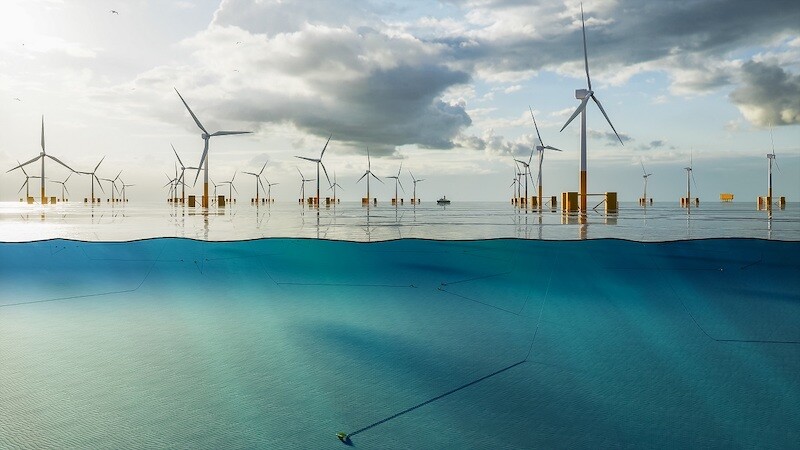Damen Shipyards is developing a new class of vessel that will be capable of supporting the next big development in offshore wind — the roll out of large scale, floating offshore wind turbines (FOWT).
Some forecasts say that by 2050 over 200 gigawatts of new FOWT will be in operation — about 13,500 units.
Given the size of the turbines and the depths of the water in which they will be positioned, these FOWTs will require chains and anchors of unprecedented sizes. Just one installation that starts to drag an anchor upwind of others could have a serious affect on the output of an entire wind farm. It's predicted that each FOWT will require between three and six anchors, with chain diameters increasing from a typical 152 mm (5.9") for a large offshore structure to upwards of 220 mm (8.6").
While the anchoring technologies will be similar, the vessels required to handle them will need to be much bigger than today’s anchor handling vessels. And given the projected demand for their services, they must be very efficient.
In cooperation with suppliers and vessel operators, Damen is now working on a new vessel class to meet this anticipated future demand. It even has its own anchor and chain production facility, giving it additional insights.
Damen said it is also in discussions with other suppliers regarding new deck systems that can accelerate the loading of chain, synthetic rope, steel wire, clump weights and other possible mooring line components in the harbor while maintaining safety.
Damen said its offshore construction facility at Damen Shipyards Mangalia, Romania, will play a part in the floating offshore wind market development. The facility can produce the large number of floating foundations on which the turbines will be mounted.
“There are many variables relating to the new vessel concept still to be assessed and explored, not [the] least [of which] the final nature of the FOWT mooring systems,” Damen’s business development manager offshore wind, Wijtze van der Leij, said in a statement. “If larger numbers of lighter anchors and chains per turbine are judged superior to fewer but larger, the vessel design will adapt accordingly.”




